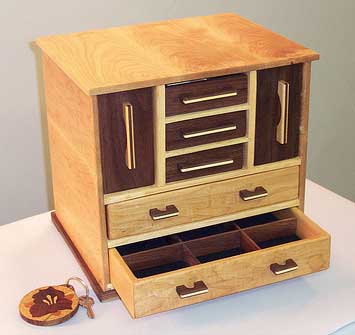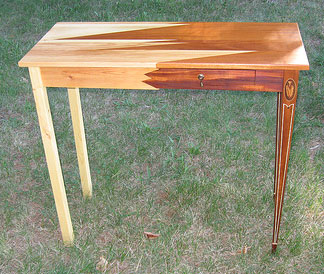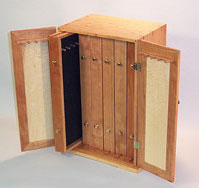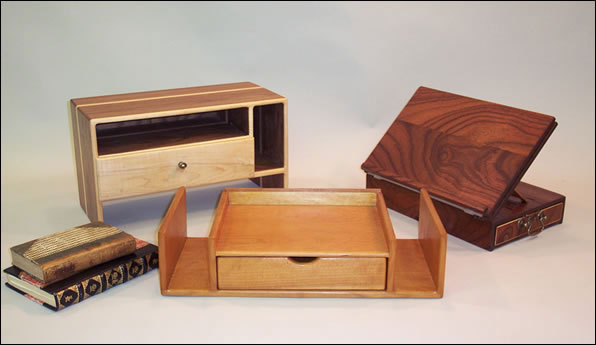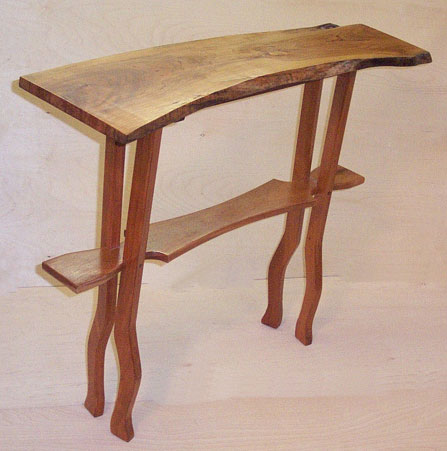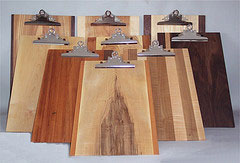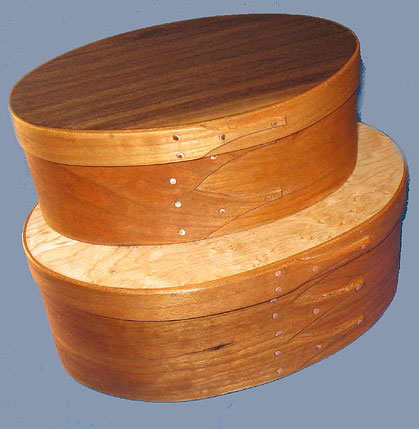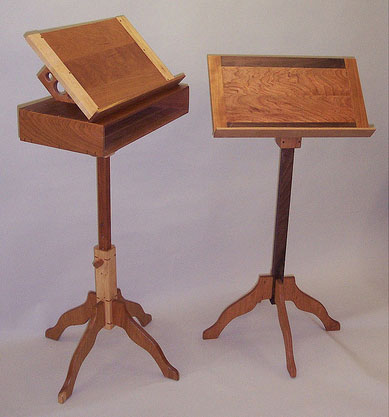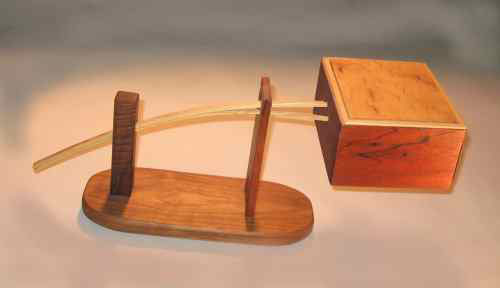
As with most woodworkers, Kate Taylor’s website nicely displays her work, a delightful collection of beautifully made boxes, furniture and turnings. But a second website, called Wooden Boxes, is a departure from the norm. It, too, showcases a wealth of excellent work, from turned urns for pet remains to more intricate jewelry boxes, but it does not stop there.
Along with her excellent woodwork, Kate shares some equally worthy thoughts. There are discussions about the environment, the taste of tomatoes, women in woodworking, photosynthesis, and even the origins and significance of Pandora’s Box. For those more interested in the nuts and bolts of woodworking, she offers step-by-step illustrated directions for making band saw boxes and Shaker boxes, along with lessons on joinery and safety. Clearly, this site, and the woodworker behind it, is something more than run-of-the-mill, and her history in the field follows that pattern as well.
“I started doing woodworking several times,” Kate recounted. “The first time was during high school when I helped build a log shed using only Colonial era hand tools. A history teacher interested in building got a group of kids to do it. I always liked working with my hands, I liked being outdoors, and it sounded like a lot of fun. Later, I spent a summer working on a farm and built a chicken coop.
“Not too long after college, I found a Vermont government program called Step up for Women that was involved in training for women in the trades. We spent two weeks on plumbing, two on carpentry and two on electrical work. Also, we got training on how to apply for a job, what to expect on the job and the different sorts of jobs available in a given field. The other thing that was really wonderful about the program was that they partnered with potential employers who agreed to pay part of the new hire’s salary until she got up to speed. That happened with me on my first job, which was making custom cabinets.
“I worked for other cabinetmakers over the years, and I always had a basement full of tools, even during periods when I took non-woodworking jobs. Consequently, I was always doing woodworking, making gifts and furniture for friends and myself. Eventually, I realized I had to start charging. My reputation spread, and about 10 years ago, I decided to go to work for myself as a woodworker and opened Kate Taylor Creative Woodworking.”
The creative part is no joke. Take a look at some of her more unusual pieces, like her Changing Times table, and you will see what I mean. It consists of a table whose two halves are radically different in every way. “Changing Times table is made of pine and mahogany,” Kate explained. “The pine side is screwed together using pieces of unmatched pine, while the mahogany side has mortise and tenon joinery and traditional inlay.
“Another unusual piece is a necklace box made for a customer who asked for a jewelry box. As we talked about it, we both realized that she was really after a place to hold only necklaces. I designed and built a box where the drawers are vertical rather than horizontal so the necklaces can hang without getting tangled. It holds at least 60 necklaces. The walnut lap desk, a more traditional piece, is a replica of one designed by Thomas Jefferson. My wild cherry table is made from salvaged wood from a tree downed on our property. Because I love the look of wood and hate to waste any, I make small items, like clipboards, from cutoffs.
“Though I have had a business website for a while, a few months ago I opened a second website called Wooden Box Maker. While the goal of the older website is to sell my woodworking, I use the other to talk more about the process of woodworking. It includes things like how to make different types of boxes, their history and even discussions of the environment and photosynthesis: things that impact woodworking even when they are not specifically about woodworking.
“When I was doing shows, I noticed that I was always more interested in the work when I understood the process and what went into it. Sometimes seeing a demonstration of how things are made changes your perception of the object itself. Shaker boxes are a good example.
“I also teach woodworking through various adult education programs and in my own shop. I teach about three classes a week at present. A lot of women sign up for courses, and some women have told me they are more comfortable with a woman teaching. However, I do not teach classes only for women. Today, women in school have the option of taking shop class. That was not a possibility when I was going to school.
“I love to write and teach, and writing a book is a way to put it out in the world. Consequently, I’ve been working on a book about women in woodworking. About 10 years ago, I used to get comments at shows asking me if my husband built this, but that is changing. Women woodworkers are out there, but are somewhat hidden, perhaps because it is a rather solitary activity and you really have to put yourself out there to be seen. There are no clearing houses where women woodworkers can connect. The online woodworking forums are for all woodworkers, of course, and welcome women, but it is still largely a male domain. I’m not sure why.”
“The goal of the book is to help make women woodworkers more visible, but it has also given me the opportunity to speak with other women about why they are doing this and how they got into it. Interestingly, when I ask about being treated differently, the majority have said that while there are incidents, most people don’t care whether a woodworker is male or female.”
Still, I had to ask; as someone who studied not only woodworking, but plumbing and electrical work as well, why wood? “I don’t want to sound preachy or like a cliché,” Kate responded, “but one of the things I like about woodworking is that it is so close to the earth. Wood was once alive, and it has a lot of life to me. I think it is important to look at the world around us and remember that is where wood came from.”
